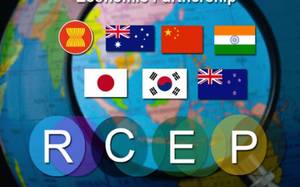India’s trade deficit with ASEAN and five other countries in RCEP is over $100 billion.
While the stage is all set for finalisation of the Regional Comprehensive Economic Partnership (RCEP) pact between ASEAN and six other countries, including India, the country’s manufacturing industries and farmers are keeping their fingers crossed, fearing it should not turn into a raw deal for them again.
Their fear is only justified given India’s adverse experience in all the free trade agreements (FTAs) so far.RCEP is a trade agreement where associating countries agree upon reducing or completely eliminating tariff and non-tariff barriers on imports and exports.India’s trade deficit with the ASEAN bloc – Brunei, Cambodia, Indonesia, Laos, Malaysia, Myanmar, the Philippines, Singapore, Thailand, Vietnam and the five others in the RCEP pact – China, Japan, South Korea, Australia, and New Zealand is already massive, and only increasing every year.
Trade deficit with the above countries which stood at $63 billion in 2013-14 had increased to $105 billion in 2018-19.While India currently sends 20 per cent of all its exports to the above countries, 35 per cent of all imports are from this bloc of countries. Strikingly, China, which is in the forefront pushing RCEP after breaking ties with the US, is the largest exporter into India.Of the country’s $105 billion trade deficit, $53 billion is only with China. Electrical machinery, equipment, appliances, plastic articles, iron and steel, aluminium, ceramic products, man-made fibres and furniture are a few of the many goods that China dumps into India every year.Thus, manufacturers of the above products fear increased dumping from China post the RCEP deal.

